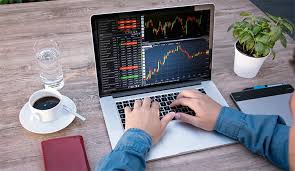
The Ultimate Guide to Forex Trading: Strategies, Tools, and Tips
Forex trading, also known as foreign exchange trading or currency trading, is one of the most popular forms of online trading. With a daily trading volume exceeding $6 trillion, the forex market presents substantial opportunities for traders. However, to succeed in this challenging environment, it is essential to understand the fundamentals, strategies, and best practices of forex trading. In this guide, we will provide you with detailed insights to jumpstart your forex trading journey. For more resources, you can check out forex trading tutorial Uzbekistan Brokers.
Understanding the Forex Market
The forex market is decentralized, meaning there is no physical location where trades occur. Instead, trading happens over-the-counter (OTC) through electronic networks among traders worldwide. The primary objective of forex trading is to exchange one currency for another in the expectation that the price will change in favor of the trader.
Trading occurs in currency pairs, where one currency is listed against another, such as EUR/USD (Euro/US Dollar). The first currency in the pair is the base currency, while the second is the quote currency. The price of the pair represents how much of the quote currency is needed to purchase one unit of the base currency.
Getting Started with Forex Trading
1. Choose a Reliable Broker
Selecting a reputable forex broker is crucial. Look for brokers who are regulated by recognized authorities, offer competitive spreads, and provide user-friendly trading platforms. Read reviews, compare the features of different brokers, and consider using demo accounts before making a final decision.
2. Learn the Basics of Forex Trading
Understanding key concepts such as pips, leverage, margin, and lots is essential for new traders. A pip is the smallest price move that a given exchange rate can make based on market convention. Leverage allows you to control a larger position with a smaller amount of capital, but it also increases risk.
3. Develop a Trading Plan
A well-defined trading plan is a roadmap for your trading journey. It should outline your trading goals, risk tolerance, preferred trading style (day trading, swing trading, scalping), and the strategies you will use for entering and exiting trades. Stick to your plan to maintain discipline and minimize emotional trading.
Key Trading Strategies
1. Technical Analysis

2. Fundamental Analysis
Fundamental analysis looks at economic indicators, news events, political stability, and other factors that can affect currency values. Understanding how economic reports (like GDP, employment figures, and inflation rates) impact the forex market can offer valuable insights into potential price movements.
3. Sentiment Analysis
Sentiment analysis gauges how other traders feel about a particular currency pair. This involves assessing market sentiment through tools like the Commitment of Traders (COT) report, which can indicate whether traders are bullish or bearish on a currency.
Risk Management in Forex Trading
Proper risk management is vital in forex trading to protect your capital from significant losses. Here are some strategies:
- Set Stop-Loss Orders: Always set stop-loss orders to limit potential losses on every trade.
- Use Proper Position Sizing: Determine how much of your trading capital to risk on a single trade based on your overall account balance.
- Avoid Overleveraging: While leverage can amplify profits, it can also lead to substantial losses. Use it judiciously.
Choosing the Right Trading Platform
The trading platform you choose can significantly impact your trading experience. Popular platforms such as MetaTrader 4 (MT4) and MetaTrader 5 (MT5) offer a range of features including charting tools, automated trading capabilities, and vast libraries of technical indicators. Make sure to select a platform that suits your trading style and is user-friendly.
Continuous Learning and Improvement
The forex market is continually changing, and staying updated is essential. Many successful traders dedicate time to studying market trends, attending webinars, reading books, and subscribing to trading signals. Consider joining trading communities or groups where you can share your experiences and learn from others.
Final Thoughts
Forex trading can be a rewarding venture if approached with knowledge, discipline, and a sound strategy. Start with a demo account to practice without risking real money, and gradually transition into live trading as you gain confidence. Remember always to manage risks and stay informed about market developments. By following this guide and continuously educating yourself, you can enhance your chances of achieving success in the forex market.
